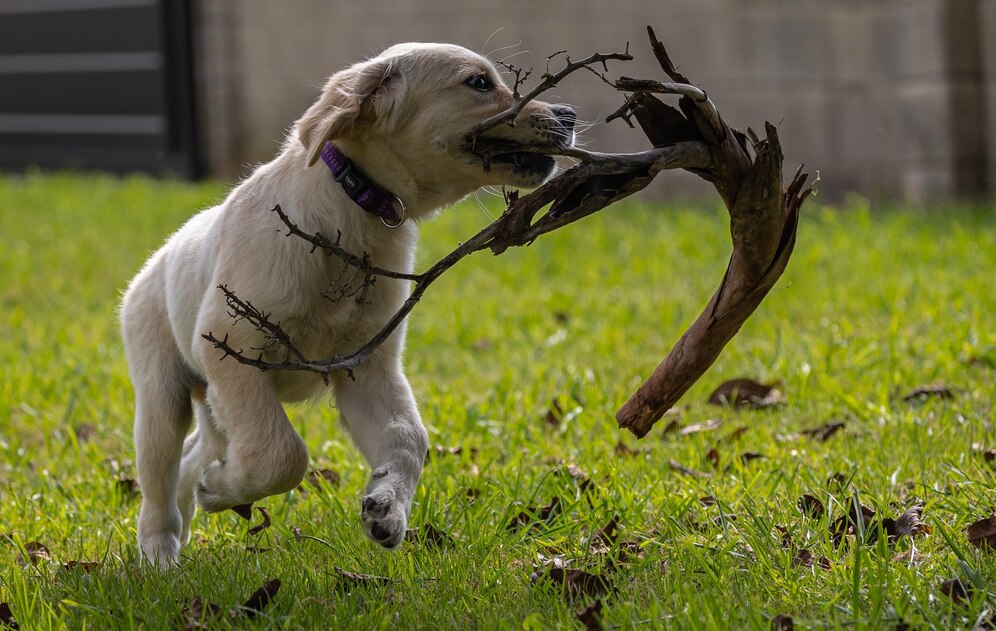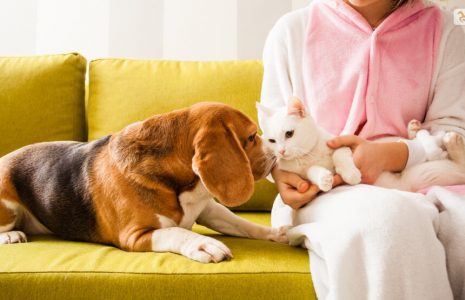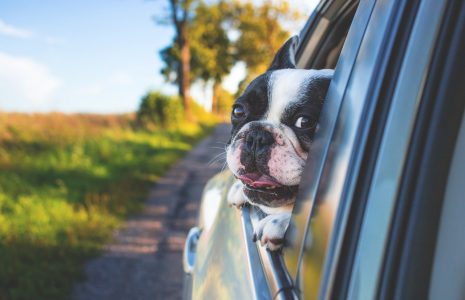Understanding Aggression In Dogs


While dogs can bring lots of joy into our lives, sometimes they can get aggressive and mean, leaving us confused and scared. Understanding this behavior is crucial to ensure safety and a good relationship with our pets.
Aggression in dogs is several responses triggered by various factors. This blog delves into canine aggression, equipping you with the knowledge to recognize it, understand its causes, and navigate the path toward positive change.
Types of Dog Aggression
Fear Aggression
Fear aggression is a common response in dogs faced with “potential” threats. Dogs may react aggressively when they feel cornered, threatened, or are put in unfamiliar situations. Some triggers could be a person or an animal they are uncomfortable with, as well as objects that may make loud, uncomfortable sounds, such as a vacuum cleaner. Understanding the triggers and addressing their fear is crucial for managing this type of aggression.
In situations of fear aggression, dogs may exhibit behaviors such as trembling, barking, or snapping. Owners should focus on creating a secure environment and gradually exposing the dog using positive reinforcement techniques and showing them there is no reason to fear these things.
Territorial Dog Aggression
Territorial aggression is a dog’s instinct to protect its space, itself, and its owner. This behavior often is excessive barking, growling, or even biting when someone or something enters the dog’s territory, such as their home or their yard.
Recognizing signs of territorial aggression, such as rigid body posture and raised hackles, allows owners to intervene effectively. Positive reinforcement can be employed to modify this behavior and teach the dog appropriate responses to perceived threats.
Idiopathic (Spontaneous) Aggression
Idiopathic aggression is a challenging form with no apparent cause. Dogs displaying idiopathic aggression showcase aggressive behavior without clear triggers or identifiable reasons. This form often requires a more extensive evaluation by professionals, including veterinarians and behaviorists, to determine potential contributing factors or neurological reasons.
Social Aggression
Social aggression arises from interactions with other dogs and can be a result of competition for resources, hierarchy struggles, or fear. Recognizing signs of social aggression, such as aggressive posturing or snarling, allows owners to intervene appropriately.
Encouraging positive socialization from an early age and monitoring canine interactions can prevent social aggression. Additionally, reinforcing positive behaviors during group activities helps build positive associations with social situations. If the dogs live together, separate your dogs and then slowly re-socialize them until they interact calmly with one another.
Redirected Aggression
Redirected dog aggression occurs when a dog is unable to reach the source of their frustration, leading to an outburst of aggression toward their target. This type of aggression can be challenging to predict but understanding common triggers is crucial.
Preventing situations that might lead to redirected aggression and providing alternative outlets for frustration can help manage this behavior. Creating a calm environment and using positive reinforcement techniques are also effective strategies.
Possessive Aggression
Dogs can display possessive aggression when it comes to their belongings, food, bed, or even a favored person. They are scared to lose their favorite possessions and will watch from a distance, charging towards anybody who may approach their belongings. Resource guarding is a common manifestation of possessive aggression, and understanding the triggers is essential for creating a safe environment.
Training dogs to associate positive experiences with sharing and gradually desensitizing them to situations that trigger possessive behavior can help mitigate this aggression. It also helps to keep their possessions “out of sight, out of mind” when they are not in use.
Predatory Aggression
Predatory aggression is deeply rooted in a dog’s instinct to hunt. Usually this type of aggression is rare and is usually only found in hunting dogs. This behavior involves chasing, catching, and potentially harming smaller animals or objects. Understanding this instinctual drive is crucial for preventing and managing predatory aggression.
Body Language Cues
Understanding a dog’s body language is essential for recognizing signs of dog aggression. Familiarizing yourself with facial expressions, body posture, vocalizations, tail language, and predatory cues allows for early intervention and effective communication with your dog.
A stiff posture, flattened ears, curled lips, and whale eyes (showing the whites) are all potential flags. Growling, snapping, lunging, and biting are more overt signs, demanding immediate intervention.
Facial Expressions
Recognizing facial cues like intense focus, dilated pupils, and a fixed gaze helps owners interpret a dog’s predatory intent and take appropriate action.
Body Posture
Predatory aggression is often accompanied by a crouched body posture, indicating readiness to pounce. Owners should be vigilant about identifying this stance during potential triggering situations.
Vocalizations
While predatory aggression is often silent, some dogs may emit low growls or whines while in pursuit. Understanding these vocalizations can aid in recognizing the dog’s intent.
Tail Language
A dog’s tail may be raised and rigid, signaling excitement and intent to chase. Observing the tail position alongside other body language cues helps in assessing the overall context.
Contributing Factors of Dog Aggression
While aggression in dogs is not rare, the factors might vary largely. We have tried to gather all the necessary factors that contribute to the furious behavior in dogs. Check them out here:
Genetics and Breed
Genetics plays a role in a dog’s temperament, but responsible breeding practices can help manage instinctual drives. Certain breeds may have stronger predatory instincts, requiring specific training and management.
Early Life Experiences
Early exposure to different environments, stimuli, and training can influence how a dog channels its predatory instincts. Positive experiences and controlled exposures during their time as a puppy contribute to a well-adjusted dog when they are older.
Negative experiences when they are younger, such as a history of abuse or neglect can leave scars and trauma, ingraining fear and mistrust into their system as an older dog.
Medical Causes
While medical issues may not directly cause predatory aggression, discomfort or pain can contribute to changes in behavior. Regular veterinary check-ups are essential for overall health and well-being.
Prevention and Management
Is your pet dog getting angry on every small matter? If that’s the case, you surely need to implement a few prevention methods. Some of the proven ones are listed below:
Understanding Triggers
Identifying and understanding specific triggers for predatory aggression is essential for effective management. Controlled desensitization involves exposing the dog to controlled versions of triggers, rewarding calm behavior, and creating positive associations.
Positive Reinforcement Training
Using positive reinforcement training can redirect a dog’s focus and reinforce appropriate behaviors. Rewarding alternative behaviors to chasing and hunting helps manage predatory aggression.
Controlled Exposure
Gradual exposure to a controlled environment and stimuli allows dogs to learn how to manage their predatory instincts. This slow exposure should be positive, therefore reinforcing calm behavior and discouraging aggressiveness.
Professional Guidance
In cases of aggression, seeking professional guidance is crucial. Certified trainers and behaviorists can assess the dog’s behavior, help identify their triggers, and develop a tailored behavior modification plan specific to their aggressive tendencies.
In the event a dog bite occurs, get medical help immediately and contact an Augusta dog bite attorney.
Conclusion
By recognizing and addressing aggressive behavior in their dogs, owners can implement strategies for aggression prevention and management. This blog provided some insight into the various forms of aggression, allowing dog owners to foster healthier relationships, promote positive behaviors, and create safe environments for both their dogs and those around them. Individualized approaches remain essential for successfully managing aggression in dogs.








All Comments
28 February, 2024
Insightful perspective – thanks for sharing!
Reply